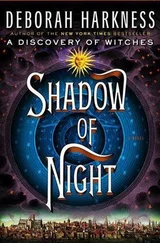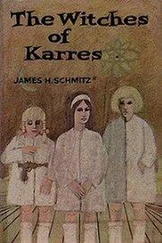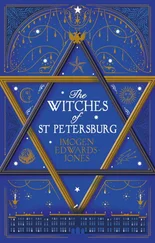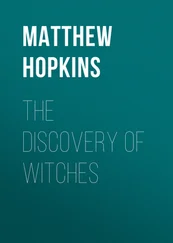“Are you all right?” he asked. “We can take a break.”
“Could I have some water?”
“I’ll get it.” Marcus hopped up from his stool. “There’s some in the specimen fridge.”
“Humans provided the first clue that acute cellular stress from bacteria and other forms of genetic bombardment could trigger quick mutations, rather than the slower changes of natural selection.” Miriam pulled a folder out of a file drawer. Opening it, she pointed to a section of a black-and-white graph. “This man died in 1375. He survived smallpox, but the disease forced a mutation on the third chromosome as his body quickly coped with the influx of bacteria.”
Marcus returned with my water. I took the cap off and drank thirstily.
“Vampire DNA is full of similar mutations resulting from disease resistance. Those changes might be slowly leading to our extinction.” Matthew looked worried. “Now we’re trying to focus on what it is about vampire blood that triggers the generation of new chromosomes. The answer may lie in the mitochondria.”
Miriam shook her head. “No way. The answer’s in the nuclear DNA. When a body is assaulted by vampire blood, it must trigger a reaction that makes it possible for the body to capture and assimilate the changes.”
“Maybe, but if so, we need to look more closely at the junk DNA, too. Everything must be there to generate new chromosomes,” Marcus insisted.
While the three of them argued, I was rolling up my sleeve. When the fabric cleared my elbow and the veins in my arm were exposed to the cool air of the laboratory, they directed their freezing attention at my skin.
“Diana,” Matthew said coldly, touching his Lazarus badge, “what are you doing?”
“Do you still have your gloves handy, Marcus?” I asked, continuing to inch my sleeve up.
Marcus grinned. “Yeah.” He stood and pulled a pair of latex gloves out of a nearby box.
“You don’t have to do this.” Matthew’s voice caught in his throat.
“I know that. I want to.” My veins looked even bluer in the lab’s light.
“Good veins,” Miriam said with a nod of approval, eliciting a warning purr from the tall vampire standing next to me.
“If this is going to be a problem for you, Matthew, wait outside,” I said calmly.
“Before you do this, I want you to think about it,” Matthew said, bending over me protectively as he had when Peter Knox had approached me at the Bodleian. “We have no way of predicting what the tests will reveal. It’s your whole life, and your family’s history, all laid out in black and white. Are you absolutely sure you want that scrutinized?”
“What do you mean, my whole life?” The intensity of his stare made me squirm.
“These tests tell us about a lot more than the color of your eyes and your hair. They’ll indicate what other traits your mother and father passed down to you. Not to mention traits from all your female ancestors.” We exchanged a long look.
“That’s why I want you to take a sample from me,” I said patiently. Confusion passed over his face. “I’ve wondered my whole life what the Bishop blood was doing as it pumped through my veins. Everyone who knew about my family wondered. Now we’ll know.”
It seemed very simple to me. My blood could tell Matthew things I didn’t want to risk discovering haphazardly. I didn’t want to set fire to the furniture, or fly through the trees, or think a bad thought about someone only to have that person fall deathly ill two days later. Matthew might think giving blood was risky. To me it seemed safe as houses, all things considered.
“Besides, you told me witches are dying out. I’m the last Bishop. Maybe my blood will help you figure out why.”
We stared at each other, vampire and witch, while Miriam and Marcus waited patiently. Finally Matthew made a sound of exasperation. “Bring me a specimen kit,” he told Marcus.
“I can do it,” Marcus said defensively, snapping the wrist on his latex gloves. Miriam tried to hold him back, but Marcus kept coming at me with a box of vials and sharps.
“Marcus,” Miriam warned.
Matthew grabbed the equipment from Marcus and stopped the younger vampire with a startling, deadly look. “I’m sorry, Marcus. But if anyone is going to take Diana’s blood, it’s going to be me.”
Holding my wrist in his cold fingers, he bent my arm up and down a few times before extending it fully and resting my hand gently on the stainless surface. There was something undeniably creepy about having a vampire stick a needle into your vein. Matthew tied a piece of rubber tubing above my elbow.
“Make a fist,” he said quietly, pulling on his gloves and preparing the hollow needle and the first vial.
I did as he asked, clenching my hand and watching the veins bulge. Matthew didn’t bother with the usual announcement that I would feel a prick or a sting. He just leaned down without ceremony and slid the sharp metal instrument into my arm.
“Nicely done.” I loosened my fist to get the blood flowing freely.
Matthew’s wide mouth tightened while he changed vials. When he was finished, he withdrew the needle and tossed it into a sealed biohazard container. Marcus collected the vials and handed them to Miriam, who labeled them in a tiny, precise script. Matthew put a square of gauze over the stick site and held it there with strong, cold fingers. With his other hand, he picked up a roll of adhesive tape and attached it securely across the pad.
“Date of birth?” Miriam asked crisply, pen poised above the test tube.
“August thirteenth, 1976.”
Miriam stared. “August thirteenth?”
“Yes. Why?”
“Just being sure,” she murmured.
“In most cases we like to take a cheek swab, too.” Matthew opened a package and removed two white pieces of plastic. They were shaped like miniature paddles, the wide ends slightly rough.
Wordlessly I opened my mouth and let Matthew twirl first one swab, then the other, against the inside of my cheek. Each swab went into a different sealed plastic tube. “All done.”
Looking around the lab, at the quiet serenity of stainless steel and blue lights, I was reminded of my alchemists, toiling away over charcoal fires in dim light with improvised equipment and broken clay crucibles. What they would have given for the chance to work in a place like this—with tools that might have helped them understand the mysteries of creation.
“Are you looking for the first vampire?” I asked, gesturing at the file drawers.
“Sometimes,” Matthew said slowly. “Mostly we’re tracking how food and disease affect the species, and how and when certain family lines go extinct.”
“And is it really true we’re four distinct species, or do daemons, humans, vampires, and witches share a common ancestor?” I’d always wondered if Sarah’s insistence that witches shared little of consequence with humans or other creatures was based on anything more than tradition and wishful thinking. In Darwin’s time many thought that it was impossible for a pair of common human ancestors to have produced so many different racial types. When some white Europeans looked at black Africans, they embraced the theory of polygenism instead, which argued that the races had descended from different, unrelated ancestors.
“Daemons, humans, vampires, and witches vary considerably at the genetic level.” Matthew’s eyes were piercing. He understood why I was asking, even though he refused to give me a straight answer.
“If you prove we aren’t different species, but only different lineages within the same species, it will change everything,” I warned.
“In time we’ll be able to figure out how—if—the four groups are related. We’re still a long way from that point, though.” He stood. “I think that’s enough science for today.”
Читать дальше












